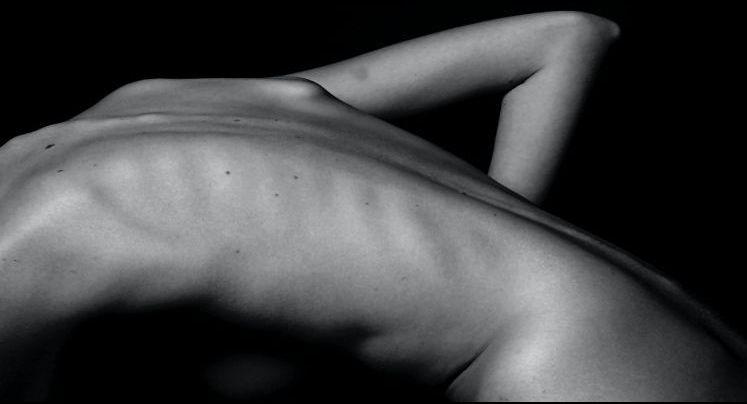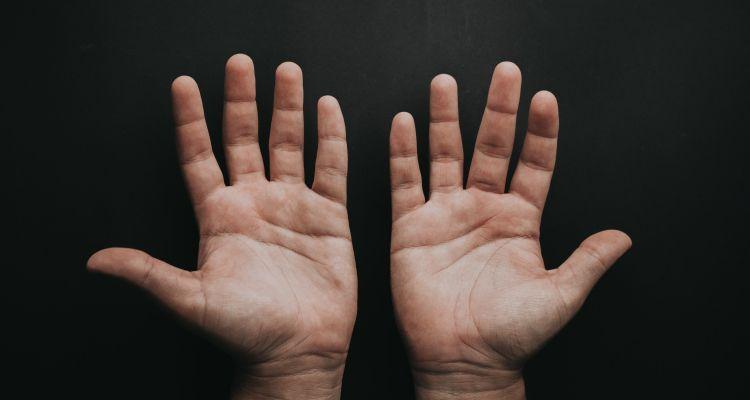
Scars - treatment and removal
Updated on 02. November 2023
Scars can occur for a variety of reasons, be it accidents, surgical procedures or skin diseases. They can be both physically and emotionally distressing and affect self-esteem. There are several treatment options that can improve the appearance of scars.
Scar Brief overview:
- Causes: Surgery, Injury, Burn, Tattoo
- Symptoms: Hardening, itching, discolouration of the skin
- Prevention: Not known
- Treatment: Cream, Laser
What is a scar?
A scar is the visible sign of a wound healing in the skin due to an injury. When the skin or tissue of the body is injured, the body immediately begins to repair the damaged area. Over time, new cells and new tissue form at the site of the injury, which is called a scar. Scars help to close the wound and protect the skin.
What symptoms can scars show?
Many injuries heal without any problems and after healing, scars are hardly noticeable. In the case of larger injuries, however, scars can form that show various complaints:
- Cosmetic impairment, if in visible areas of the body.
- Hardening or thickening of the skin at the site of the scar
- Discolouration of the skin, such as redness or darkening
- Itching or burning at the site of the scar
- Sensitivity or pain when touched or moved
- Numbness in the scar area and surrounding regions
- Restrictions in mobility or function of areas of the body affected by the scar
- Long-term weather sensitivity with burning, itching or pulling of the scar when the weather changes
What is the cause of scars?
The cause of scars is usually an injury or trauma that has damaged the skin or tissue of the body. This can be a cut, a deep scratch, a burn, a surgical procedure or some other type of injury. When such an injury occurs, the body sets in motion a healing response to repair and regenerate the damaged tissue. Common causes of scars are:
- Scars from surgical procedures
- Injuries from accidents
- Skin diseases like acne
- Scars from burns
- Piercings and tattoos
- Scratching or inflammation of minor wounds
What is the healing process for scars?
When the skin or tissue of the body is injured, the body sets in motion a healing response to repair and regenerate the damaged tissue. In the first days and weeks after the injury, special cells in the body called fibroblasts produce collagen and other proteins. This causes the wound to close with new cells. Scars can vary in colour, texture and size and are often thicker and less flexible than normal skin tissue. Visible skin changes from the new tissue occur when deeper layers of skin are injured.
What are the special features of scarred tissue?
Scar tissue is not able to fully restore all layers of the skin. During the healing process, the epidermis (the top layer of the skin) can often be fully or partially restored. But it may be thinner or have a different texture than the surrounding skin. The dermis, the middle layer of the skin, can also be affected by scarring. Typically, there is an uneven distribution of collagen fibres, which can lead to a visible scar. In the subcutis, scarring is less pronounced and less visible than in the upper layers. Scar tissue does not contain sweat or sebaceous glands and likewise no pigmentation.
What are the different types of scars?
There are four types of scars, which are classified according to their appearance or healing process:
- Healthy scarring: A healthy scar goes through a natural healing process. As a result, it gradually fades over time and becomes inconspicuous. The wound area is not painful after healing and shows no redness, swelling or other signs of inflammation.
- Hypertrophic scars: In this form, too much scar tissue has formed. Hypertrophic scars form elevations and thickenings that are confined to the original wound area. This form of scarring is often itchy and usually occurs with burns and on joints.
- Keloid scars: Keloids also form elevations and thickenings, even beyond the actual wound area. The scars may be red, itchy or painful and sensitive to pressure. Growths may still be seen after a long time.
- Atrophic scars: The body has produced too little scar tissue, so the scar is not completely filled in. This causes an indentation or depression to form. This can occur with acne or burns, for example.
- Contractures: Scar contractures can be caused by the shrinkage of scar tissue. This causes the surrounding tissue to contract. As a result, mobility and function of the affected body part may be limited. Common causes of scar contractures include burns, burns, cuts, wounds, piercings and surgery.
What causes scars to itch?
The scar itches, which is a good sign for healing. Various tissue cells have to be formed to build up the new structure of the skin. The formation of the skin layers is controlled by messenger substances, including histamine. This tissue hormone makes the skin itch. If the itching is particularly severe or combined with pain, a doctor should be consulted immediately. He or she can exclude or treat potential side effects caused by infections.
Why do old scars itch?
People often talk about weather sensitivity in scars. Itching and slight pain can also occur in old scars after many years. Patients often notice this when the weather changes, especially before rain or cold. However, this effect is very individual. The exact cause has not yet been clarified. However, it is suspected that the causes are altered running nerve pathways or collagen fibres.
How are scars treated?
The treatment of scars strongly depends on the cause, size and course. Especially with good and timely wound care, there are good prospects for flat, light scars.
How can I treat a fresh scar?
The initial care of the scars is done by the attending doctor or a dermatologist. Once the scar is closed or the stitches are removed, the patients should take over the aftercare. This includes:
- Moisturisers: special moisturiser or scar cream helps to keep the skin around the scar supple and improve the appearance of the scar. Creams that contain silicone are especially good at keeping moisture in.
- Massage: A gentle massage with the fingers or a massage roller promotes blood circulation to the scar tissue. This breaks down collagen and softens the tissue.
- No scratching: Even if the fresh scar itches, scratching should be avoided.
- Avoid water: Prolonged bathing or showering and excessive moisture around the wound can cause the tissue to soften. This can increase the risk of infection.
- UV protection: A new scar is sensitive and can be damaged by sun exposure. It is best to cover the scar or apply a high level of sunscreen.
- Comfortable clothing: Tight clothing or other objects that can put pressure or friction on the scar should be avoided. These pressures can affect the growth of scar tissue.
If there are individual problems or questions about scar treatment, the attending physician or a dermatologist should be consulted. They can help determine the best care for your specific scar.
How are poorly healed scars removed?
There are different methods to remove scars. Which method is used depends on the type and extent of the scar. For mild changes, simple methods like peels can help. For more severe abnormalities, the following methods are common:
- Surgical removal: in this method, the scar is surgically removed and the skin at the site of the scar is re-sutured. This may be necessary for deeper scars that affect the surrounding tissue or limit the function of the affected area.
- Laser scars: Laser treatments help by removing scar tissue or stimulating collagen production. This can help improve the appearance of the scar and make it less visible.
- Steroid injections: Steroid injections can help treat hypertrophic and keloid scars. Injecting steroids into the scar can help reduce swelling and inflammation and soften and flatten the scar tissue.
- Dermabrasion: Dermabrasion removes the surface layer of the skin to smooth the scar and improve its appearance.
What helps with acne scars?
Many people find scars on the face, such as lesions caused by pimple scars, particularly disturbing. This is usually the atrophic form, which shows inwardly sunken areas of skin. There are various procedures available for treatment, which are used depending on the severity. For mild pimple scars on the face, chemical peels, fruit acid peels or microdermabrasion can be used to slightly abrade the skin surface. If there are larger irregularities, cold therapy, injections or laser therapy can be used to remove the pimple scars.
How are tattoo scars removed?
As a rule, tattoo scars heal without further complications. However, if the tattoo is too deep or needs to be removed, a laser treatment is suitable. This destroys the pigments of the tattoo and stimulates the skin cells to gradually dissolve the tattoo. However, the procedure can be painful and requires several sessions. There is also a risk of pain, redness, swelling or scarring.
How can scars from breast reduction be treated?
Scars from breast surgery can be distressing for women. Mastectomy is often particularly severe, when large parts or all of the breast must be removed. In this operation, complications with the scar are avoided by making the right incision. Scars in the breast area heal better than in other parts of the body. In addition, the subsequent care of the wound by the doctor and later by the patient himself will in most cases avoid the formation of depressions or indurations. Should problems with the scar still occur, a doctor should be consulted.
Which scars can be treated with lasers?
Sunken (atrophic) or protruding (hypertrophic) scar tissue can be corrected with a laser. The Erbium YAG laser is the most commonly used. This involves sending short pulses of laser light to the scar. This leads to the heating and subsequent destruction of the superficial scar tissue. As a result, the scar becomes much smoother after just one treatment. Laser therapy can be used for acne, stretch marks and surgical scars such as Caesarean section. Treatment with the laser can significantly reduce pain and movement restrictions in burn scars.
What helps against the itching of scars?
Witch hazel, also known as witch hazel, can help against itching. Witch hazel extracts contain astringent substances and tannins that pull the wounds together. This reduces the itching. Additionally contained tannins and flavonoids, with anti-inflammatory and antioxidant properties, promote healing and reduce inflammation. Witch hazel significantly increases the moisture of the skin and prevents the scar from drying out. Cool compresses with witch hazel extract or wound creams are applied.
What home remedies help with scars?
Besides witch hazel, other home remedies can support the care and healing of scars. However, these should only be used on closed scars without discharge. Particularly effective are:
- Cooling: Applying a cold compress or ice pack to the affected area can help relieve itching and pain.
- Calendula ointment: Calendula contains a number of healing substances such as triterpene saponins and essential oil. These soothe the skin and support the healing process.
- Chamomile: Chamomile has an anti-inflammatory effect and promotes healing of the skin. A camomile tea infusion is applied as a poultice to the affected area.
- Oils: Massaging oils into the scar can help soothe the skin and relieve itching. Olive oil or coconut oil are suitable for this purpose.
When using home remedies, make sure that they are well tolerated and do not cause allergic reactions.

Hameli's vision
Go to Vision
Vaginal Fungus - Symptoms, Causes & Treatment
Go to Vaginal mycosis
Dry skin - What helps against it?
Go to Dry skin
Witch hazel - varieties, cutting, effect, & products
Go to Witch Hazel
Recognise and treat coccygeal fistula
Go to Coccygeal fistula
Anal fistula - symptoms, causes & treatment
Go to Anal fistula
Labial tear - Symptoms, Causes & Treatment
Go to Labial tear
Intertrigo - Cause, symptoms and treatment of the skin wolf
Go to Intertrigo
Anal abscess: symptoms, recognition, causes & treatment
Go to Anal abscess
Chickenpox - symptoms, vaccination, infection and treatment | Hamelis
Go to Chickenpox
Seborrhoeic Eczema - Symptoms, Causes & Treatment
Go to Seborrhoeic eczema
Anal fissure - Symptoms. Causes & home remedies
Go to Anal fissure
Vaginal dryness - symptoms, causes & treatment
Go to Vaginal dryness
Hives - Cause, symptoms and treatment
Go to Hives
Hamelis experts
Go to Experts
Rose lichen - symptoms, causes and treatment
Go to Rose lichen
Ringworm: Symptoms, Causes & Treatment
Go to Ringworm
Scabies - symptoms, cause and treatment
Go to Scabies
Treat anal eczema sustainably
Go to Anal eczema
Eczema - symptoms, causes and treatment
Go to Eczema
Contact allergy - symptoms and treatment
Go to Contact allergy
Treat stubborn nail fungus
Go to Nail fungus
Crabs - Intimate area, symptoms & treatment
Go to Crabs
Pruritus - Causes, symptoms and treatment
Go to Pruritus
Rosacea on the face - symptoms, causes and treatment
Go to Rosacea
Perioral dermatitis - symptoms, treatment & home remedies
Go to Perioral dermatitis
Skin fungus - cause, symptoms and treatment
Go to Skin fungus
Perineal tear - origin, degrees & causes
Go to Perineal laceration
Anal prolapse: symptoms, causes, treatment
Go to Anal prolapse
Skin rash - causes and treatment
Go to Skin rash
Genital herpes - woman, man & symptoms
Go to Genital herpes
Atopic dermatitis in children, adults and pets
Go to Atopic dermatitis
Angioedema - symptoms, causes and therapy
Go to Angioedema
Nappy dermatitis - cause and treatment of sore baby bottom
Go to Diaper rash
Sunburn - symptoms, duration & what helps?
Go to Sunburn
